Annals of Limnology and Oceanography
Drilling speed-up and production-increasing development practice of ultra deep clastic reservoir based on Geology-Engineering integration in the Tarim Basin, Northwest China
Guodong Ji1,2*, Changchang Chen1*, Haige Wang1,2, Hongchun Huang1, Qiang Wu1 and Li Liu1
2CNPC Research Institute of Petroleum & Development, Beijing 100083, P. R. China
Guodong Ji, CNPC Engineering Technology R&D Company Limited, Beijing 102206, P. R. China, E-mail: 772920980@qq.com, jigddri@cnpc.com.cn
Cite this as
Ji G, Chen C, Wang H, Huang H, Wu Q, et al. (2022) Drilling speed-up and production-increasing development practice of ultra deep clastic reservoir based on Geology-Engineering integration in the Tarim Basin, Northwest China. Ann Limnol Oceanogr 7(1): 001-010. DOI: 10.17352/alo.000011Copyright
© 2022 Ji G, et al. This is an open-access article distributed under the terms of the Creative Commons Attribution License, which permits unrestricted use, distribution, and reproduction in any medium, provided the original author and source are credited.Kelasu structural belt in Tarim Basin has a large reservoir burial depth and complex geological conditions, and challenges such as ultra-deep, high temperature, high pressure, and high stress lead to big problems related to well control safety and project quality. To solve these key technical problems that set barriers to the process of exploration and development, a set of drilling technology processes via geology-engineering integration is established with geomechanics as the bridge. And an integrated key drilling engineering technology for the safe speed-up of ultra-deep wells was formed, integrating well location optimization, well trajectory optimization, stratum pressure prediction before drilling, stratum drillability evaluation, and bit and speed-up tool design and optimization. Combined with seismic data, logging data, structural characteristics, and lithology distribution characteristics, the rock mechanics data volume related to the three-dimensional drilling resistance characteristics of the block was established for the first time, and the vertical and horizontal heterogeneity was quantitatively characterized, which provided a basis for bit design, improvement, and optimization. During the process of drilling, the geomechanical model shall be corrected in time according to the actual drilling information, and the drilling “three pressures” data shall be updated in real-time to support the dynamic adjustment of drilling parameters. Through field practice, the average drilling complexity rate was reduced from 18% to 4.6%, and the drilling cycle at 8500 m depth was reduced from 326 days to 257 days, which were significantly better than those of the vertical wells deployed in the early stage without considering geology-engineering integration.
Introduction
The Kelasu structural belt is located on the northern margin of the Tarim Basin, with an exploration area of over 2.6 × 104 km2 and proven natural gas reserves of over 1 × 1012 m3. It is expected to become a large-scale continental ultra-deep clastic gas production base in China [1]. At present, the number of wells in this block has reached 36, with an average well depth of 7,026 meters, and the deepest well has exceeded 8,200 meters. The average drilling cycle is 326 days, and the proportion of complex accidents and aging accounts for 18%. The long drilling cycle, high accident complexity rate, and low natural productivity of a single well are the keys to limiting the effective development of ultra-deep natural gas in the Kelasu structural belt [2].
The current drilling difficulties are mainly in two aspects. Firstly, the understanding of ultra-deep rock properties and mechanical behavior is limited, the rock mechanics constitutive relationship is quite different from that of shallow layers, and the research on ultra-deep geomechanics is slightly lagging behind. The extreme conditions of “high temperature, high pressure and high stress” brought about by the deep reservoir depth (the maximum depth of more than 8200 m) have aggravated the safety risk of good control and the difficulty of reservoir stimulation [3], resulting in major catastrophic safety in ultra-deep resource exploitation. The risk of accidents is high. Secondly, the surface and underground geological structures of the Kelasu structural belt are very complex (Figure 1). Under the action of strong compressive stress, a series of folds, fold-related faults, and sudden structures are formed along the deep detachment layer [4]. Many drilling and completion engineering problems. The undulating ground surface brings difficulties to well-site selection and surface engineering. The shallow “roof-like” stratum is high and steep (the inclination of the stratum is as high as 70° locally) and fractures are developed, which can easily cause the instability of the wellbore and cause complicated drilling accidents [5]. Poor drillability is one of the biggest problems restricting drilling efficiency. Mudstone, gypsum-salt, and salt-rock in plastic formations interact with each other, and the thickness varies greatly (hundreds of meters to 4000 m). Physical and chemical effects during drilling cause complex wellbore environments, and coexisting problems of collapse, leakage, and overflow, making drilling difficult Large, high-security risk.
At present, geological research and engineering implementation in oil and gas exploration and development are technically separated, and the research on well kick, well collapse, lost circulation, high drilling resistance and difficult fracturing caused by some special geological conditions is not enough [6]. The control factors and geomechanical mechanism are unclear, resulting in a lack of scientific basis for engineering design and construction optimization. In the drilling of oil and gas wells in deep and complex geological conditions, geomechanical properties are key parameters affecting drilling well trajectory optimization, drillability assessment, wellbore stability, well completion, and reservoir stimulation [7]. Therefore, geomechanics plays a bridge role in drilling engineering and effectively solves engineering problems [8]. Taking a typical gas reservoir in Qiulitag Zhongqiu block as an example, this paper builds a geo-engineering integrated collaborative platform, analyzes the key role of geomechanics in scientific development such as well location deployment, well trajectory optimization, and drilling safety acceleration, and establishes an integrated implementation. process, form a series of key technologies, and give full play to the advantages of multi-disciplinary collaborative work. Taking the drilling case of Well Zhongqiu 10, the practice of safe, speed-up, and production-increasing technology for integrated geology-engineering drilling is explained in detail. Support the efficient development of newly discovered deep gas reservoirs and facilitate the construction of large oil and gas fields.
Geomechanical model construction
Seismic fracture characterization: For fracture prediction, there are many commonly used seismic attributes, including curvature, coherence volume, azimuth and dip, chaotic volume, variance volume, ant volume, AVO attributes, etc., [9] but the application effects in different regions are also different. Through the comparative analysis of various seismic attribute bodies that reflect the distribution law of fractures, it is found that the fractures in the Kelasu structural belt have better responses in terms of curvature and seismic attributes of the ant body. Before using the seismic attribute volume to predict the fracture distribution law, it is necessary to preprocess the original seismic data volume to remove random noise in the original seismic data, enhance the lateral continuity of the seismic event, and retain boundary information such as faults and fractures [10]. In this study, the structural smoothing method was used to preprocess the original seismic data volume. After processing, the stratigraphic continuity of the data became better, and the relationship between local fractures was clear, which effectively reduced the interference of noise and non-fracture factors (Figure 2).
Curvature is one of the seismotectonic properties that are sensitive to a fault and fracture response [11]. There are three main methods for calculating seismic curvature attributes: (1) Difference method; (2) Fourier transform method; From the results of various curvature simulations (Figure 3), the minimum curvature method has a better effect in the study area, followed by the maximum curvature [12] and the average curvature noise is too much to be effective. The ant body is extremely sensitive to subtle changes in seismic data and strata torsion, which provides a good data basis for the fine interpretation of complex fault zone profiles and the three-dimensional characterization of fault shapes [13]. First, active ant tracking is performed on the high-definition variance volume. Since the dip angle in the study area is generally large, in order to reduce the interference of the stratum inclination on the ant tracking, the interference with the dip angle less than 50° was filtered when the ant body was extracted, and the preliminary results were obtained (Figure 3d). Lots of strong noise along the Crossline. Therefore, while extracting the ant body, filtering along the angular range of ±2° (the minimum angle available) along the Crossline direction, that is, the first noise reduction data of the ant body is obtained, which obviously suppresses the noise (Figure 3f). Combined with the characteristics of profile faults and the strike of plane faults, adding azimuth filtering and supplemented by light source enhancement, and then performing passive ant tracking (Figure 3e), the large faults are clearer) [14]. The natural fractures in the Zhongqiu block are mainly near-north-slip faults. The fractures have good stability and are distributed in bands, parallel to the NE-trending thrust faults on the south side. It is accompanied by a sudden change in the structural dip, so it is considered to be a fold-related fracture.
Geomechanical model of kelasu structural belt: As the characteristics of staggered superposition of sub-salt reservoirs in the Qiulitag structural belt, in this study, the reverse finite element method was used to establish the three-dimensional crustal stress field model of the whole stratum of Zhongqiu structure (Figure 4a) [15,16]. In this model, the longitudinal resolution of the model was 2 m ~ 5 m, in which, the distribution of natural fractures and their activity (expressed by the ratio of shear stress to the normal stress of fracture surface in this paper) (Figure 4b) were predicted, with the cold color standing for the crack with poor activity, and the warm color for the crack with good activity. Firstly, establish the geological geometric model of the whole stratum system, and after the preprocessing of point cloud data thinning, local encryption, and cutting, adapt the idea of reverse finite element engineering modeling to establish a continuous and regular level to meet the crustal stress simulation, so as to overcome the technical problems of the reverse fault and repeated strata modeling in the modeling of continuous crustal stress and accurately solve the complex intersection relationship between fault and stratum [17]. Secondly, adapt the X-Y two-way difference iteration method to iteratively scan some long conjoined anticlines with large fluctuation and span, to further improve the accuracy of reverse finite element modeling; Through the finite element model and geological point cloud calculation and analysis, adjust the modeling error of local elements. Then, through the virtual geometric level in the finite element model, the mesh refinement and coarsening of the crustal stress model are flexibly realized, and the crustal stress meshes continuous model of superimposed nappe is established [18]. Finally, considering the magnitude and direction of crustal stress at good points, determine the boundary load constraints of the model to realize the crustal stress field modeling of the whole layer system of large deformation geological body.
Practice of drilling technology based on geology-engineering integration
Well location optimization and well trajectory optimization: It was found from the drilled well in the Kelasu structural belt that great differences in per-well productivity, drilling borehole wall stability, and stimulation effect of well completion reconstruction occurred between the same tectonic belt or different tectonic belts. As well, reservoir fractures develop and are highly heterogeneous, and the degree of fracture development and potential mechanical activity are the main factors affecting per-well productivity [19]. The research suggested that the distribution of the stress field in the reservoir section controlled the distribution of natural fractures. The natural fractures in the low-stress area are developed and easy to be fractured in the later stage, resulting in high productivity and good stability of the drilling hole. Based on the above knowledge, the well location and well trajectory optimization technology includes 4 factors, namely, consider the shallow complex structure, avoid the high-risk area for borehole wall stability, consider fracture development orientation with good activity, and prefer low-stress area, was proposed [20]. Taking the deployment of well Zhongqiu 10 in the Zhongqiu fault block as an example, the drilling in this fault block encounters shallow nappe, so the risks of sticking and casing collapse are high. Due to this, Zhongqiu 10 well is planned to be drilled with a highly inclined well type to avoid the hanging wall nappe and the complex shallow surface, so as to prevent the large scale of leakage, block falling, sticking and other complex and the failure to drill and uncover the target layer during drilling, in order to achieve the purpose of geological drilling. Meanwhile, considering the factors such as borehole wall stability, permeability fracture [21] encountered in drilling, and easy later reconstruction. The finite element simulation method based on structural horizon control was adopted to establish the three-dimensional crustal stress field model of well Zhongqiu 10 (Figure 5). The modeling results suggested that the lowest stress (blue area) in Figure 4 should be the best target location for well point deployment. On the one hand, from the previous drilling experience and borehole wall stability evaluation, multiple sets of pressure systems coexist, the longitudinal variations of leakage pressure and stratum collapse pressure are large, and there is no drilling fluid density window in local intervals, and under this strike-slip stress state, a vertical well is the most unstable well type and drilling can not be realized; On the other hand, according to the actual drilling analysis of well Zhongqiu 9, this area belongs to the fractured reservoir, and the angles of the majorities of the fractures are high. Thus, a vertical well can not guarantee the accurate vertical crossing of the fractures, which is not conducive to production increase. Considering this, the good type of highly inclined well was determined for the drilling. First, determine the target according to the stress field and fracture mechanical activity distribution, then evaluate the development orientation of natural fractures with good permeability after considering the actual drilling results of adjacent wells, and determine the drilling orientation conducive to borehole wall stability. On the basis of meeting the requirements of surface conditions and hole structure, the wellhead position and target orientation of the well is finally determined at 10 ° in the northeast direction with a hole inclination of 70 °. The actual target orientation of the well was 15 °, the hole inclination was 76 °, and the closure distance was 1221 m. To reach the target layer, only 33 days were costed, and the average daily footage was 11.5 m. No drilling complex events such as drilling fluid leakage have happened. The well was completed and put into production using two-stage sand fracturing, with a 9mm nozzle, a tubing pressure of 75.7Mpa, and a daily gas production of 74 × 104m3, three times that of other wells in the same block. Well, Zhongqiu 10 was the first successful highly inclined well drilled in the Kelasu structural belt and achieved high production, which laid a good foundation for the promotion of highly deviated wells in the block and explored a new well type for efficient development.
Pre-drilling pressure prediction: Accurate stratum pressure prediction is an important basis for good control safety guarantees and drilling fluid density design. However, due to the complex geological conditions of the Kelasu structural belt, the coexistence of multiple sets of pressure systems, the development of extremely thick gypsum salt rock stratum, and the limited quality of seismic data, it is difficult to accurately predict the stratum pressure. Establish the stratum pressure prediction technology of well-seismic joint inversion [22] to obtain the regional high-precision data volume through well-seismic joint inversion, and then adopt the pressure prediction method of man-machine interaction to establish the nonlinear compaction trend to obtain the preliminary stratum pressure profile, and then calibrate the preliminary profile by using the measured drilling pressure data. And finally, obtain the three-dimensional data volume of stratum pressure consistent with the geological background and engineering conditions, from which the data of newly deployed well points were extracted to obtain the stratum pressure profile and clarify the longitudinal distribution features for the purpose of designing of the good structure and drilling fluid density. The pressure prediction method of well-seismic joint inversion can overcome the limitations caused by the monotonicity of the data, and the prediction accuracy is improved from less than 70% of the traditional method to 92%. Figure 6 shows the pre-drilling stratum pressure prediction profile of well Zhongqiu 10, in which, the predicted stratum pore pressure coefficient rises from 3185m of Neogene Kangcun formation to 2.02 g/cm3 at the top of the gypsum salt rock section of Paleogene Kumgelimu group, and then decreases to 1.60 g/cm3 in Cretaceous Bashjiqik formation of the target layer. There is one fault and one set of salt layers developed in well Zhongqiu 10, the identified collapse pressure of the fault is 1.86 g/cm3 and the leakage pressure is 2.15 g/cm3. Through appropriate optimization of drilling fluid, the density of drilling fluid increased to 1.30 g/cm3 at the middle layer of Kangcun formation, and at the top of the gypsum salt rock section, with the increase of predicted pore pressure coefficient, the drilling fluid density increased to 2.30 g/cm3, and then, at the Cretaceous system, the drilling fluid density decreased to 1.70g/cm3 according to the predicted pore pressure data. No serious drilling complications such as overflow and leakage happened in the whole well in the process, and the drilling was completed smoothly. The man-machine interactive pressure prediction method of well-seismic joint inversion was applied in the newly deployed wells in Kelasu structural belt, and the model is under continuous correction with the completed drilling, resulting in the increasing coincidence rate between prediction and actual drilling from 70% to 92%, which greatly reduced the risk of overflow, leakage and sticking, significantly improved the drilling safety and reduced the nonproduction time, and lays a foundation for the improvement of well control safety and drilling operation efficiency.
Full wellhole speed up
The three-dimensional drillability distribution model of the Zhongqiu block: Conduct formation core mineral composition, rock strength, and drillability testing. Based on this, the drilling resistance profiles of 52 wells were established by using the logging data of the Zhongqiu block [23,24]. From top to bottom, the drilling resistance of the formation deteriorates. The drilling resistance of the Kangcun formation is grade 6 ~ 8, which belongs to a difficult drilling formation. The clustering algorithm is used to classify the rock strength of 52 wells vertically, and the seismic data is used as the constraint to identify the faults and structures. The PETREL software is used to establish the three-dimensional rock mechanics section of the Zhongqiu block, which is designed for the drill bit for the glutenite heterogeneous formation, improvement and optimization provided the basis (Figure 7). From the perspective of the three-dimensional drillability model, the compressive strength and heterogeneity distribution generally increase gradually from top to bottom, reaching the largest in the Kangcun Formation, up to 180Mpa. The abrasiveness index and heterogeneity gradually increased from top to bottom, reaching the largest in the Kangcun Formation, up to level 10. Some strata in the Kuqa Formation are more abrasive than the Kangcun Formation.
Suprasalt speed up
Based on the research in geology-engineering integration, and after deepening the understanding of supra sale stratum lithology and bit working state, optimizing the plane design of cutting tooth center, bit tooth layout, and diameter retaining design [25,26], we have researched and developed SDR616 specified Polycrystalline Diamond Compact (PDC) bit with high impact resistance and long service life. For this bit, the 16mm cutting teeth are used to improve the tooth layout density of the shoulder. Six-blade structure with three long blades and three short blades is adopted. The main cutting teeth are 6 more than that of the conventional five-blade bit, which enhances the stability and service life of the bit. Double rows of teeth are at the shoulder and stable torque teeth are at the core; To improve the bit stability, an integrated structure and 4-inch diameter retaining are adopted, which make it applicable to stably inclined well sections. The drill bit test results in the quasi-diagenetic section and diagenetic section of the conglomerate layer (Figure 8) showed that the average footage of a single drill bit was high and the drilling speed was fast. Optimize the bit parameters through a continuous process of R&D, test evaluation, improvement, and re-test. As well, the conventional “passive inclination prevention” drilling technology is difficult to deal with the salt formation with a large dip angle (15 ° ~ 87 °). In order to solve the problem of deviation prevention and fast drilling in high and steep formations, specified foreign vertical drilling tools were introduced, and a standard operation mode was established to form an inclination-prevention fast drilling technology for high and steep structures, of which the mechanical ROP was 3 ~ 6 times higher than that of conventional drilling, and the good inclination was controlled within 1 °. In order to reduce vibration and improve the service life of drilling tools, shock absorbers and other speed-up tools were selected in the good section of the gravel layer with lithology (nondiagenetic, quasi-diagenetic, and diagenetic), and strengthening measures such as high WOB, high speed, high pump pressure, large displacement, and large torque was adopted to further improve the mechanical ROP of the upper huge thick gravel layer.
Salt layer speed up and safe drilling
There are great challenges in how to safely drill the salt layer, because the salt layer has the following features: the high content of chloride ion and calcium ion is easy to cause the thickening and poor flow performance of water-based drilling fluid; The intercalated mudstone is easy to hydrate, resulting in hole instability; High-pressure salt water layer is easy to damage the tectonic force of water-based drilling fluid and cause heavy powder settlement; Under the condition of “high density, high salinity, and high temperature”, the stability of water-based drilling fluid is poor. In order to realize safe drilling in the salt layer, it is necessary to do well in the fine correlation of stratum and the analysis while drilling of high-pressure brine and weak layer, so as to continuously improve the accuracy of geological prediction. On this basis, combined with the geological features of the salt layer, the oil-based drilling fluid with high density, strong inhibition, high-temperature resistance, salt resistance, calcium resistance, and saltwater damage resistance is used to overcome the drilling “fortress” of drilling in ultra-deep salt gypsum layer. In addition, on the basis of “waterproof and pressure relief”, explore the fine pressure control well drilling and completion technology, and tackle the problem of complex accidents and high timeliness during the drilling and completion of the salt gypsum layer by accurately controlling the well bottom pressure under the condition of narrow density window. Through the deepening of the research on geology-engineering integration, the horizontal and vertical development of salt layer in Zhongqiu block was clarified [27]. Then a layer of salt-blocking casing was designed for the case of single salt layer,deep buried depth of salt top, and thin salt layer, and a two layers of salt-blocking casings were designed in the case of shallow buried depth of salt top, thick salt layer or two sets of salt layers. The comparison results of the drilling time suggest that in the case of the salt top layer sticking, after drilling and uncovering the salt top for 1 ~ 2m, the salt can be seen and the intermediate completion can be achieved, and that in the case of salt bottom layer sticking, this purpose was realized through the combination of stratigraphic correlation, element logging and slim hole test drilling. At the same time, a clear intermediate completion principle of salt bottom sticking was formulated, so that the success rate of salt bottom layer sticking in mature blocks was higher than 90% Figure 9.
Subsalt speed up
Based on the evaluation of rock drillability and drilling efficiency, the normalized drillability analysis of the whole well section was carried out (Figure 8). Among them, Xiyu formation was sandstone mudstone interlayer with high drillability class value, but the hardness was high in general; The drilling specific energy curve fluctuated violently, indicating that the penetration depth of the bit is uneven and the drilling tool has stick-slip vibration. The practical drilling suggested that the composite sheet collapse was more serious. Kuqa formation and Kangcun formation were homogeneous sandstone with quartz content of 45% ~ 65%, indicating that they were strong grinding stratum; Its underground vibration was weaker than that of Xiyu formation, so the demand for bit aggressiveness was small. The bit parts that were severely worn were mainly at the shoulder and nose. According to the combined analysis of geomechanics and engineering practice, the drill bit of Xiyu formation has high tooth distribution density and weak aggression, the depth of the composite sheet into the formation is low, and the composite sheet is almost free of wear. Therefore, the high-efficiency abrasive resistance PDC bit with certain aggression should be preferred to improve the drilling speed of the machine; The bit parts that were severely worn in Kuqa group and Kangcun group were mainly at the shoulder and nose, and some composite pieces had jumping teeth and annular grooves. abrasion resistance PDC bits with certain impact resistance should be preferred to improve the per-bit footage.
Optimization of well completion reconstruction
In order to strengthen the supporting role of geological engineering integration in the effective production increase of single well, the standard achievement map of well completion geological engineering integration (Figure 10) is established, which contains geological information (geological stratification), geomechanics, drilling and completion engineering and other information [28]. Starting from the particularity of Qiulitag reservoir, considering rock brittleness, in-situ stress, fracture toughness and stress state of natural fractures, this paper analyzes the control relationship of four parameters on formation fracturing difficulty, establishes a prediction model of fracturing index to characterize the reservoir fracturing difficulty [29], and can be sensitive to the characteristics of fracturing difficulty of reservoirs at different structural positions and different reservoir depths. As can be seen from Figure 10, The fracturing ability of well Zhongqiu 10 is significantly higher than that of well Zhongqiu 9 without considering the geological engineering integration scheme. In the practical application of fracturing, select the appropriate reconstruction interval according to the logging information and fracturing, then determine the perforation interval according to the fracturing index, preliminarily determine the reconstruction mode, optimize the subsection classification scheme according to the longitudinal stratification characteristics of stress, and finally determine the construction pressure and construction displacement according to the size of stress value and the critical opening pressure of natural fracture [30]. According to the above fracturing principle, the two sections of well Zhongqiu 526 ~ 356 are selected as the reservoir reconstruction. Through the comprehensive understanding of new fracturing prediction wellbore technology evaluation, near wellbore reservoir completion quality evaluation and gas reservoir quality, the fracturing transformation scheme of sand fracturing for long fractures and connecting the effective natural fracture network around the well is formulated [31], and the open flow after transformation reaches 200 × 104m3/D, which is 3 ~ 10 times that of conventional development wells, and remarkable production increase effect has been achieved.
Conclusion
This paper systematically combed the necessity and implementation scheme of the implementation of geology-engineering integration under the background of Kelasu structural belt in Tarim Basin. The geology-engineering integration effectively coordinates the collaborative work between geological research and engineering implementation, and organically integrate the purposes of “geological research service engineering” and “engineering achieves geological purpose”, so as to make the pre-drilling engineering scheme design more scientific and gives better quantitative basis for the engineering parameter adjustment during the drilling.
Taking the Zhongqiu block in the middle of the Kelasu structural belt as an example, from the whole life cycle of drilling such as well location deployment, trajectory optimization, drilling design and drilling speed increase, illustrating the main steps of the integrated practice of geology and engineering, and the deployed Well Zhongqiu 10 realized the Drilling is zero complexity. The three-dimensional geological drillability distribution map of the Zhongqiu Block was established, which effectively guided the design and selection of the drill bit. The drilling speed and production were significantly better than the vertical wells deployed in the early stage without considering the integration of geology and engineering. Feasibility and advantages of engineering integration. It is proved that the working concept and key technology of geology-engineering integration are not only applicable to the ultra deep oil and gas drilling project in Tarim Basin, but also have a good reference for the exploration and development of ultra deep and complex oil and gas in other petroliferous basins in Western China.
The improvement of the use efficiency of multi-disciplinary data is still the basic work that can not be ignored in the research in geology-engineering integration. At present, Tarim Oilfield has built a number of exploration and development database systems, which basically realizes the centralized management and data sharing of multidisciplinary data. But the problem of information island still exists, and the timeliness and data deep mining is still insufficient. In order to provide a more solid foundational guarantee for the research in geology-engineering integration, it is necessary to realize the deep integration and effective mining of multi-disciplinary data through the remote decision support center for drilling and completion and the integrated data platform of geology-engineering, so as to form a “remote, integrated, real-time, visual and diversified” integrated organization and management mode of geology-engineering.
The authors would gratefully like to acknowledge the financial support from National Science and Technology Major Project “Deep and Ultra-Deep Well Efficient and Rapid Drilling Technology and Equipment” (No. 2016ZX05020-002) and National Key R&D Program “Intelligent Rock Breaking Mechanism and Steering Control Method in Complex Formations” (No. 2019YFA0708302).
- Jiang T, Sun X, Development of Keshen ultra-deep and ultra-high pressure gas reservoirs in the Kuqa foreland basin, Tarim Basin: Understanding and technical countermeasures. Natural Gas Industry B. 2019; 6(1):16-24.
- Hou B, Chen M, Jin Y. Research of drilling complexities in Dabei belt of Tarim Basin. Advanced Materials Research. 2011; 402:715-718.
- Li X, Zhang C, Feng Y. An integrated geomechanics approach to evaluate and manage wellbore stability in a deep graben formation in Tarim Basin. Journal of Petroleum Science and Engineering. 2021;(3):109391.
- Shcherbakov S, Kataev V, Zolotarev D. Coverd karst landforms: complexification of methods to estimation of morphometric parameters in engineering purposes. Engineering Geology World, 2018; 13(6):10-23.
- Savchenko N. Estimate of stress-strain state of rocks in the area of drilling Kola ultradeep well. Journal of Mining Science. 2004; 40(1):24-30.
- Wilson A. 3D Full-Field and pad geomechanics models aid shale gas field development in China. Journal of Petroleum Technology. 2017; 69(10):74-76.
- Liang W, Zhao Y, Liu J. Advances in in-situ modified mining by fluidization and in unconventional geomechanics. Advances in Geo-Energy Research. 2021; 5(1): 1-4.
- Xie J, Qiu K, Zhong B. Construction of a 3D geomechanical model for development of a shale gas reservoir in the Sichuan Basin. SPE Drilling & Completion. 2018; 33(4).
- Yang Z, Zhao Z, Peng W. Integrated application of 3D seismic and microseismic data in the development of tight gas reservoirs. Applied Geophysics. 2013;(2):157-169.
- Ernest G, Zee M. Sampling biases and mitigations in modeling shale reservoirs. Journal of Natural Gas Science and Engineering. 2019;71(1):1-11.
- Chopra S, Marfurt K. Volumetric curvature attributes add value to 3D seismic data interpretation. The Leading Edge. 2007; 26(7):856-867.
- Di H, Gao D. Efficient volumetric extraction of most positive/negative curvature and flexure for fracture characterization from 3D seismic data. Geophysical Prospecting. 2016; 64(6):1454-1468.
- Pedersen S, Skov T, Randen T. Automatic fault extraction using artificial ants. SEG Technical Program Expanded Abstracts.2002; 21: 512-515.
- Ding W, Fan T, Yu B. Ordovician carbonate reservoir fracture characteristics and fracture distribution forecasting in the Tazhong area of Tarim Basin, Northwest China. Journal of Petroleum Science & Engineering. 2012; 86(4):62-70.
- Rojas L, Tveritnev A, Carlos P. Rock Type Characterization Methodology for Dynamic Reservoir Modelling of a Highly Heterogeneous Carbonate Reservoir. Paper presented at the Abu Dhabi International Petroleum Exhibition & Conference. Abu Dhabi, UAE, 11-14 November, 2020.
- Sakhaee A, Li W. Two-Scale Geomechanics of Shale. Spe Journal. 2019; 22(01):161-172.
- Gale FW, Holder J. Natural fractures in the Barnett shale: Constraints on spatial organization and tensile strength with implications for hydraulic fracture treatment in shale-gas reservoirs. Paper presented at The 42nd U.S. Rock Mechanics Symposium (USRMS), San Francisco, California, USA. 29 June-2 July, 2008.
- Suarez R, Herring S, Handwerger D. Comprehensive analysis of core geology, rock properties, logs and seismic data provides a well-constrained geological model for the bossier/haynesville system. Paper presented at Unconventional Resources Conference, Calgary, Alberta, Canada, 22-25 November, 2013.
- Weng X, Kresse O, Chuprakov D. Application of complex fracture model and comprehensive workflow in unconventional oil and gas reservoirs. Journal of Petroleum Science and Engineering. 2014; 124: 468-483.
- Lalehrohe F, Bouma J. Well spacing optimizationin EagleFord. Paper presented at Unconventional resources conference, Calgary, Alberta, Canada, 30 September, 2014.
- Infante EF, Chenevert ME. Stability of boreholes drilled through salt stratums displaying plastic behavior. SPE Drilling Engineering. 2013; 4(1): 57-65.
- Wu C, Chen M, Jin Y. Prediction of pre-drilling borehole wall stability using seismic inversion technology. Oil Drilling & Production Technology. 2006; (2): 18-20. (in Chinese)
- Andrews G, Hareland R, Nygaard D. Methods of using logs to quantify drillability. Paper presented at The Proceedings of 2007 Rocky Mountain Oil & Gas Technology Conference, Denver, USA, 1-3 March, 2007.
- Ma H. Formation drillability prediction based on multi-source information fusion. Journal of Petroleum Science and Engineering. 2011; 78(2): 438-446.
- Hareland G, Yan W, Nygaard R. Cutting efficiency of a single PDC cutter on hard rock. Journal of Canadian Petroleum Technology. 2009; 48(6): 60-65.
- Akbari B, Miska SZ, Yu M. The effects of size, chamfer geometry, and back rake angle on frictional response of PDC cutters. Paper presented at the ARMA Annual Convention and Exhibition, Long Beach, California. 22-25 April, 2014.
- Teng X, Chen M, Yang P. Full hole acceleration technology for ultra deep wells in Kuqa foreland basin. China Petroleum Exploration. 2016; 21(1): 76-88. (in Chinese)
- Bahrami H, Rezaee R, Hossain M. Characterizing natural fractures productivity in tight gas reservoirs. Journal of Petroleum Exploration & Production Technology. 2012; 2(2):107-115.
- Ohta Y, Aydan D. The dynamic responses of geo-materials during fracturing and slippage. Rock Mechanics & Rock Engineering 2010; 43(6):727-740.
- Liu Y, Chen P, Wu B. Mechanics of hydraulic-fracture growth from a wellbore intersecting natural fractures. Spe Journal. 2019; 8(4): 382-391.
- Bulant P, Eisner L, Psencik I. Importance of borehole deviation surveys for monitoring of hydraulic fracturing treatments. Geophysical Prospecting. 2010; 55(6):891-899.
- Nelson HN, Bird KJ. Porosity-depth Trends and Regional Uplift Calculated from Sonic Logs. National Reserve in Alaska. Scientific Investigation Report 2005–5051 U.S. Department of the Interior and USGS, 2005.
Article Alerts
Subscribe to our articles alerts and stay tuned.
 This work is licensed under a Creative Commons Attribution 4.0 International License.
This work is licensed under a Creative Commons Attribution 4.0 International License.
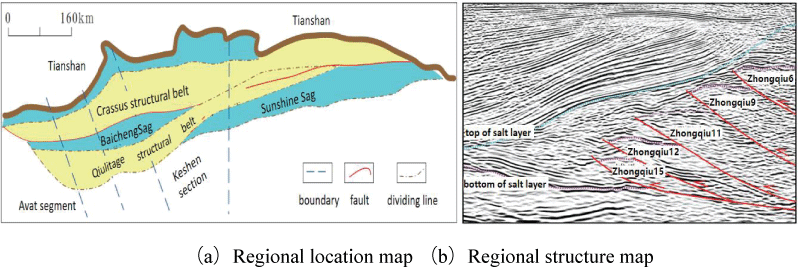

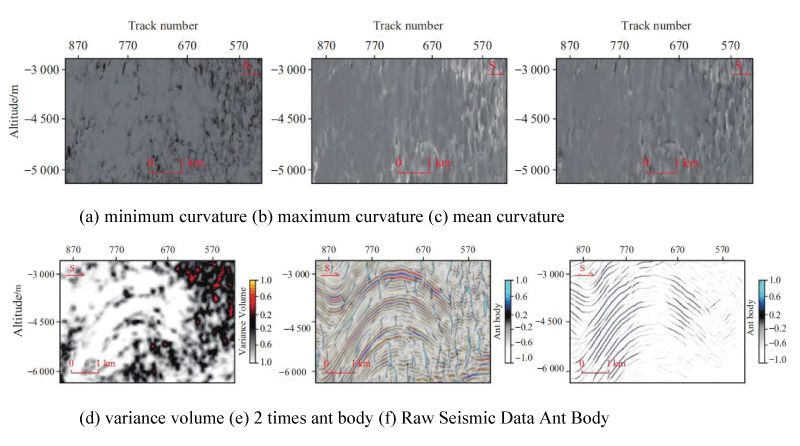
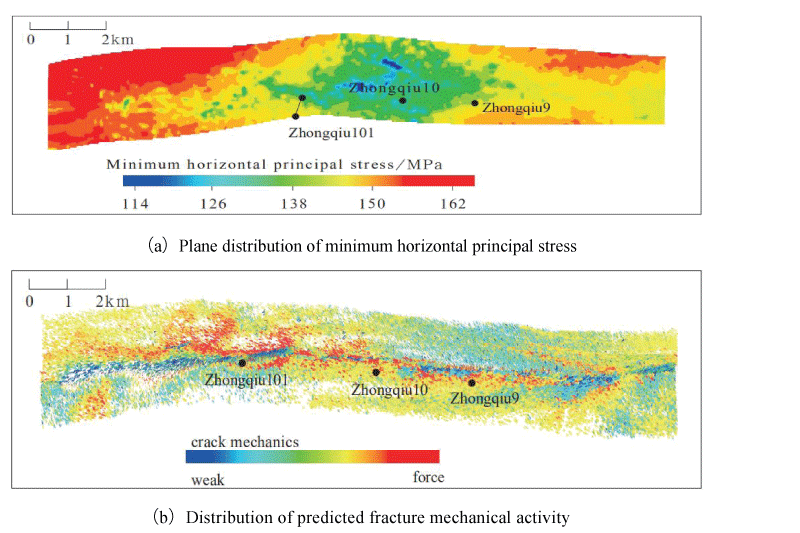
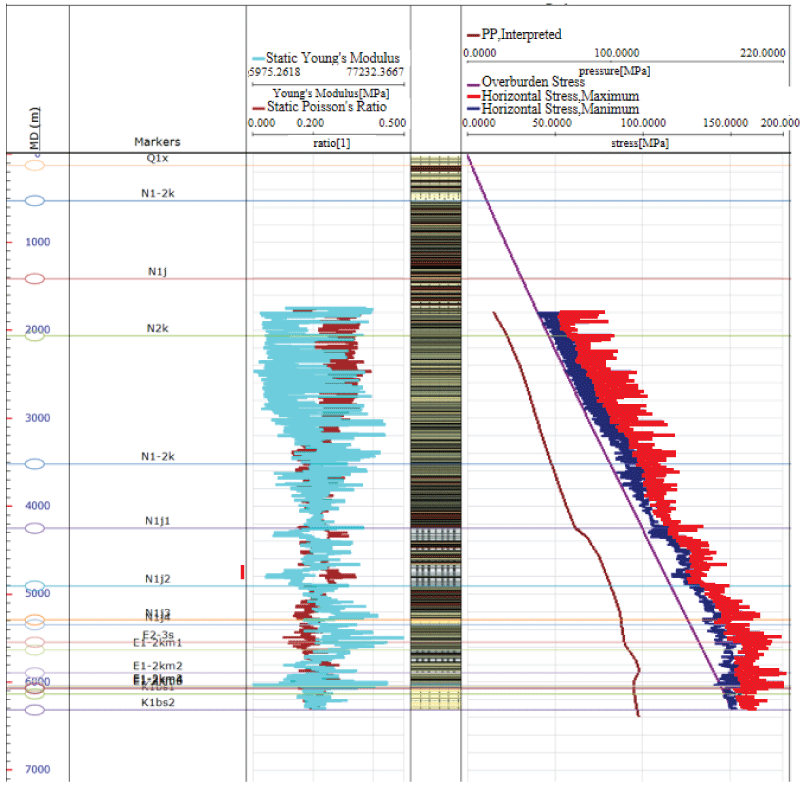
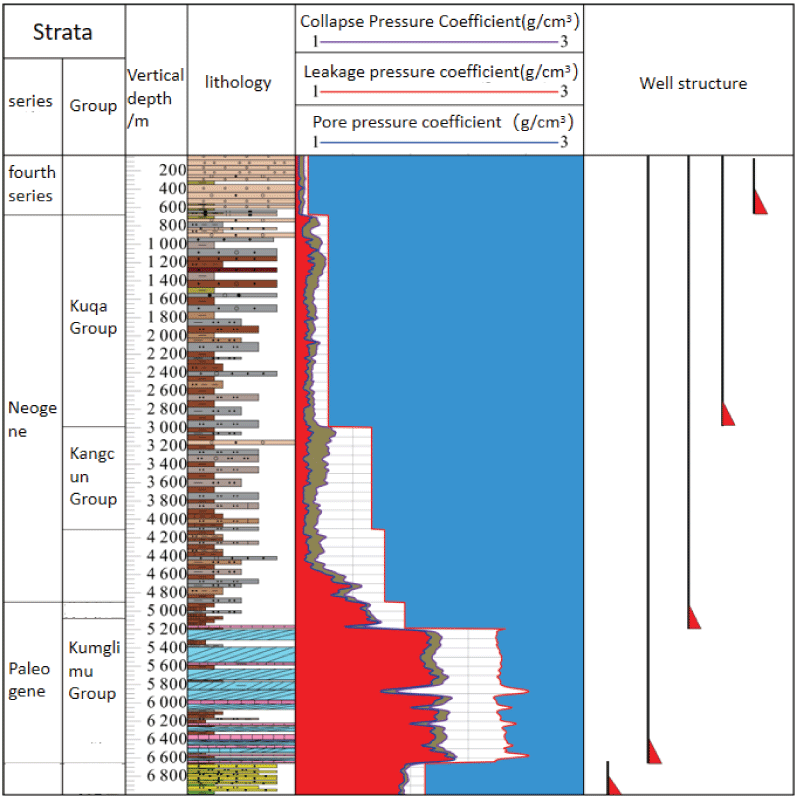
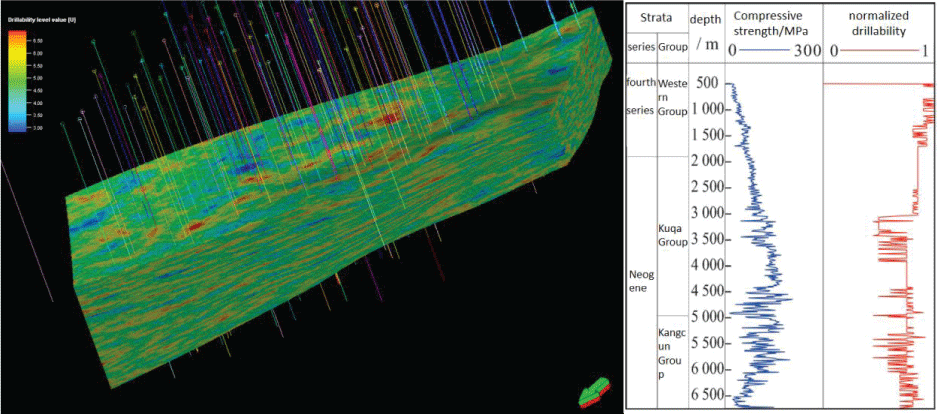

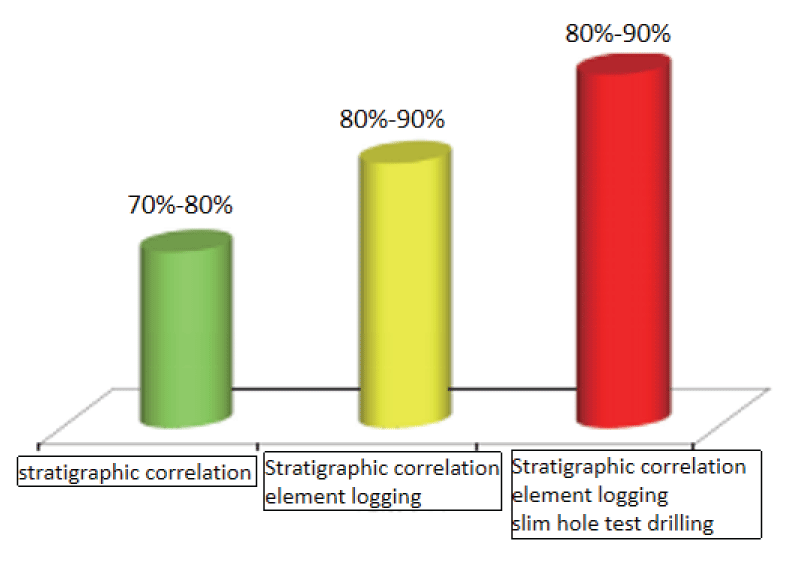
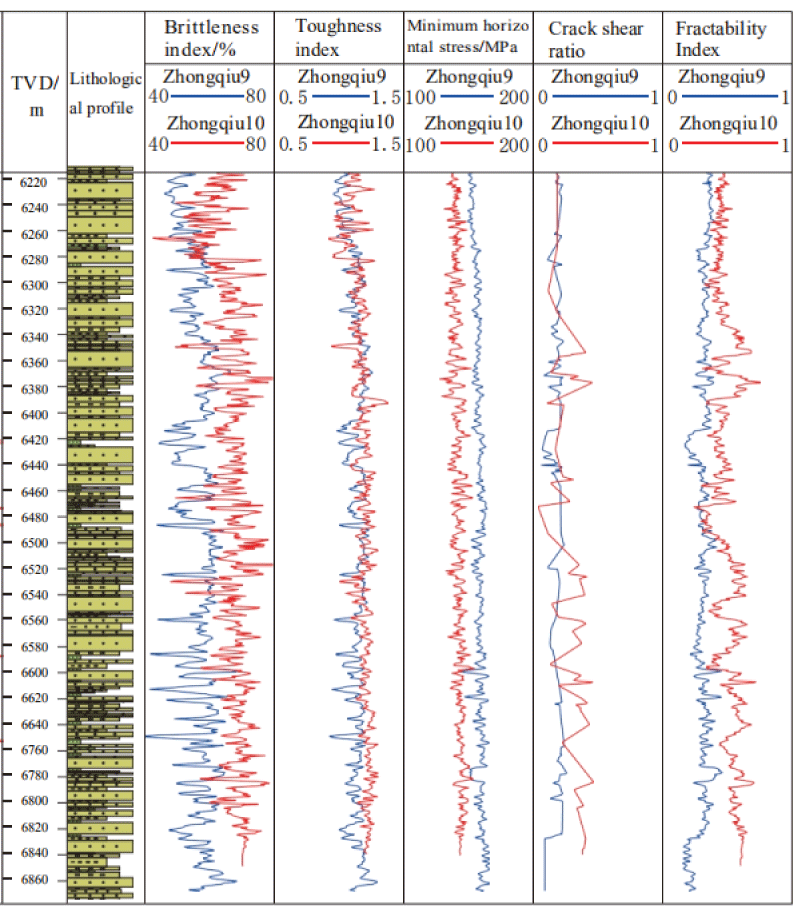


 Save to Mendeley
Save to Mendeley
